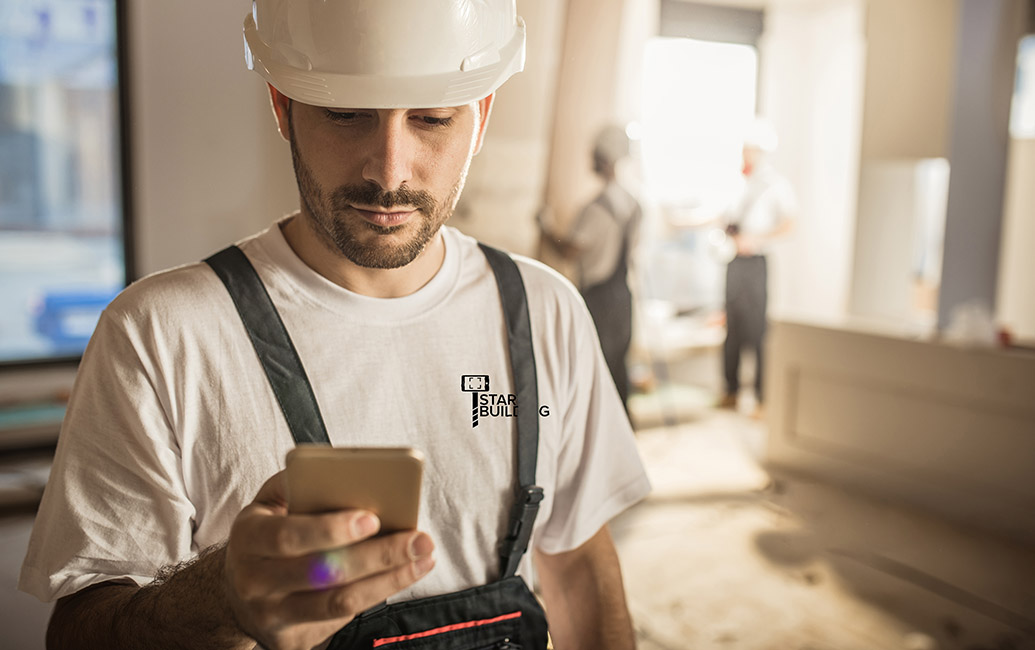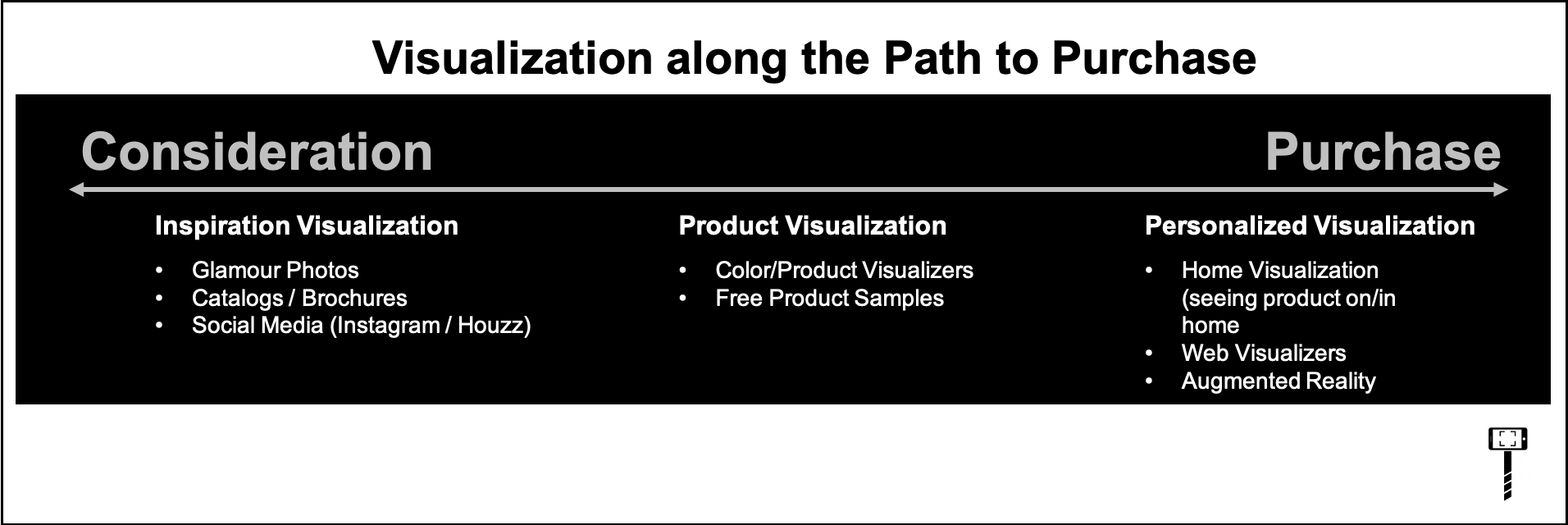The Building Products Industry is ripe for disruption.

“THERE’S A WAY TO DO IT BETTER - FIND IT.”
THOMAS EDISON
In this episode, Tim chats with the Founder and CEO of Groundwork, Jeff Wraley on how contractors are saving time and money on qualifying leads with video and automated text messaging. Groundwork gives them the ability to instantly qualify leads, create a memorable customer experience and increase their close rates by focusing on the right customers.
In this episode, Tim chats with the Founder and CEO of Bullseye, Joshua Rich on how dealer and contractor locators are underutilized and not driving leads and sales for the business.
In this episode, Tim chats with the Co-Founders of Digs, Ryan Fink (CEO) and Ty Frackiewicz (CPO) on how they are making “every home understood” with their AI-driven collaboration tool for homebuilders and homeowners. We also spend a few minutes talking about Streem, a previous startup they launched that was focused on AR powered video technology.
In this episode, Tim chats with Gabe Paez, Founder and CEO of The Wild on how their Augmented and Virtual Reality solutions are allowing architects, engineers and the construction industry to collaborate virtually on the design of their spaces before they are built. Saving time and money by being more efficient and solving problems earlier in the process.
In this episode, Tim chats with Gabe Paez, Founder and CEO of The Wild on how their Augmented and Virtual Reality solutions are allowing architects, engineers and the construction industry to collaborate virtually on the design of their spaces before they are built. Saving time and money by being more efficient and solving problems earlier in the process.
In this episode of the Start Building Podcast, Tim chats with Nathan Henderson, Founder and CEO of BILT on how their 3D interactive instructions are drastically improving the overall customer experience and changing the way we as consumers experience the final step in the path to purchase - installation and assembly. Once you experience BILT, you'll never want to open another instruction booklet again.
In this episode of the Start Building Podcast, Tim chats with Michael Wisnefski (CEO) and Ashley Boeckholt (CRO) about why they founded MaterialsXchange and how they are disrupting the entire industry by automating the process and bringing price transparency to everyone. This is the future of buying and selling lumber.
It’s comes as no surprise that I have a passion for technology and innovation within the building products industry. The Start Building Podcast helps building product industry professionals stay in tune with technology and innovation that is changing the way we do business. We talk with founders, innovators and dreamers that are disrupting our industry.
The on-demand culture is all about decreasing friction and increasing accessibility. It’s something that building material manufacturers and dealers need to get better at. Your customers want to get answers now, and they don’t always want to call (or send a fax).
Innovation is all around us. Processes that are typically manual and take time, are now being done automatically in real-time. We see it in other industries, and over time it slowly works itself into the building materials industry. Over the last few years, and most recently with COVID-19, adoption to innovation has increased dramatically. That is a good thing. Consumers have easier, faster and more automated experiences everyday, and it’s only a matter a time before they demand it from our industry.
The most exciting innovation in visualization is the use of artificial intelligence (AI). It’s mind boggling what is happening when AI is used to enhance the visualization process. It creates a dramatically better user experience and one that is faster and more automated. The faster you can get your customers visualizing your product on their homes, the more confidence and excitement you create.
The most exciting innovation in visualization is the use of artificial intelligence (AI). It’s mind boggling what is happening when AI is used to enhance the visualization process. It creates a dramatically better user experience and one that is faster and more automated. The faster you can get your customers visualizing your product on their homes, the more confidence and excitement you create.
Visualization is often considered a marketing effort, as it should be. But, there is a huge opportunity that is often missed - which is the massive benefit it brings to the sales team. For every website i’ve managed, the visualizer has been the top lead generator. The most exciting “marketing tool” that sales reps call me about is visualization tools.
“When and how should I utilize augmented reality technology?” To keep it simple, I place Augmented Reality experiences within two buckets; Marketing and Sales. Marketing AR is primarily fun and highly interactive and is all about brand engagement. Sales AR is about adding value to the end user bringing them down the sales pipeline from consideration to purchase. There will often times be crossover, but experiences are typically heavily marketing focused or sales focused. Both can be extremely valuable if implemented correctly.
Our Industry has been hit hard by COVID-19. If there is a sliver lining, it’s two things; construction mostly continued and the market is remaining strong, and home builders had to pivot and implement digital transformation initiatives as quickly as possible.
These past few months have pushed digital innovation and adoption by 3-5 years. COVID-19 has required every business to look at how they communicate and sell to customers. Combine that with consumers changing buying habits shifting to e-commerce and their desire to research online before going into stores - now is the time to be looking at Augmented Reality, and more specifically WebAR.
The 2019 International Builder Show was a big year for virtual reality, and I look forward to seeing what innovations will be showcased this year in Las Vegas.
To all the manufacturers showcasing at the International Builder Show, it’s time to Start Building.
So how do you develop and launch a success app? We have narrowed this down to 4 key factors. Simplicity, Timely, Added Value, Realism. We’ve implemented these factors into our START Rating System for App Reviews.
Markilux’s entire product catalog is in their AR App. Homeowners can swap styles and colors, and see what size is needed for their home. It also shows the amount of shade it produces, so you can choose the perfect awning for your home.
I don’t know the future plans of Hover, but I can imagine having my home and yard in a tool that allows me to visualize it all.
I want a pool in the backyard or a paver patio - visualize with Hover.
I want to do some landscaping and gardening - visualize with Hover.
I want to add a porch or deck to my home - visualize with Hover.
In 2014, while leading digital marketing at TimberTech and AZEK, I launched the first Augmented Reality app in the building products industry. Five years later, AR and VR are just now slowly gaining traction within building products.
AR/VR PROJECT EXPERIENCE

AZEK AR Deck Visualizer
the first Augmented reality app in the building products industry.

Lowe’s Holoroom
The first Virtual Reality experience in retail
&
THe first kitchen sold in vr.

Toll Brothers Kitchen 360
The first vr experience in the
home building industry.





















In this episode, Tim chats with the CEO of Diamondback Tool Co., Connor Crook about his journey from Lawyer to Leader, and how his leadership style has helped build the right team as they've grown to be the most sought after tool belt on the market. Diamondback has tapped into the power of social media and built relationships with Pro’s to help build a strong brand.